Reading on mobile? Click here to watch
When it premiered in Paris on 29 May 1913 – 100 years ago on Wednesday – The Rite of Spring created a seismic shift in the world of ballet. Nijinsky's convulsive, earthbound choreography and Stravinsky's roiling musical dissonances brought a new sensibility, a new set of possibilities to dance. Such was the ballet's power that choreographers have been channelling it ever since.
As Javier de Frutos put it when I interviewed him last month, "There's a very long line of us who have chosen to pit ourselves against the terror of Rite".
This week, the line lengthens with no less than three Rite-inspired dance events appearing on the London stage. Akram Khan's iTMOi (In the Mind of Igor) explores the creative aftershocks of Stravinsky's genius; Meryl Tankard's The Oracle (pdf) delves into the forces of sexuality and madness that collided in Nijinsky's choreography. And at Chisenhale Dance Space, three different works find modern equivalents for the ballet's themes of violence and sacrifice.
One of the ballet's most enduring elements is the image it presents of vulnerable human bodies battling against the forces of nature, a struggle ferociously imagined in Stravinsky's score. It's an ordeal of both the flesh and the spirit that culminates in the dance to death of the Chosen One, or sacrificial virgin.
But we get a very different view of the music and its scenario in a visualisation of Stravinsky's music by Jay Bacal and Stephen Malinowski, accessible through You Tube in two parts: The Adoration of the Earth, embedded at the top of this piece, and The Exalted Sacrifice, embedded below.
Reading on mobile? Click here to watch
It's an animated graphical score that, in Malinowski's words, allows "your eyes to lead your ears" as the music's structure and the lines of orchestration are given shape on screen. In some ways, Malinowski's animation has a close kinship with dance – the floating arc of the melodic line, the spatial thrust and pattern of the chords, the expressive colour and timbre of the various instruments.
But there's one very fundamental difference between this digital choreography and any danced version that I've ever seen.
On stage, the dynamic of Rite is intensely visceral: fragile bodies pitted against gravity, the urgency of desire pitted against mortality and chaos. In Bacal and Malinowski's Rite, however, the music is drawn towards an almost celestial clarity; it feels closer to the stars than to the Earth. That's partly due to the rigorous patterning of the animation's design, but also because the whole concept of this graphical score is that it allows our eye to anticipate the music, preparing a logical path for it. It's a beautiful, but very different experience of Rite – more about transcendence than terror.
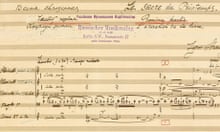
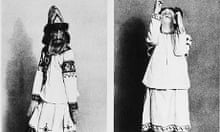
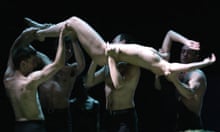
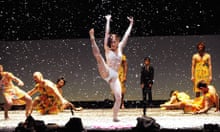

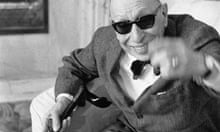
Comments (…)
Sign in or create your Guardian account to join the discussion